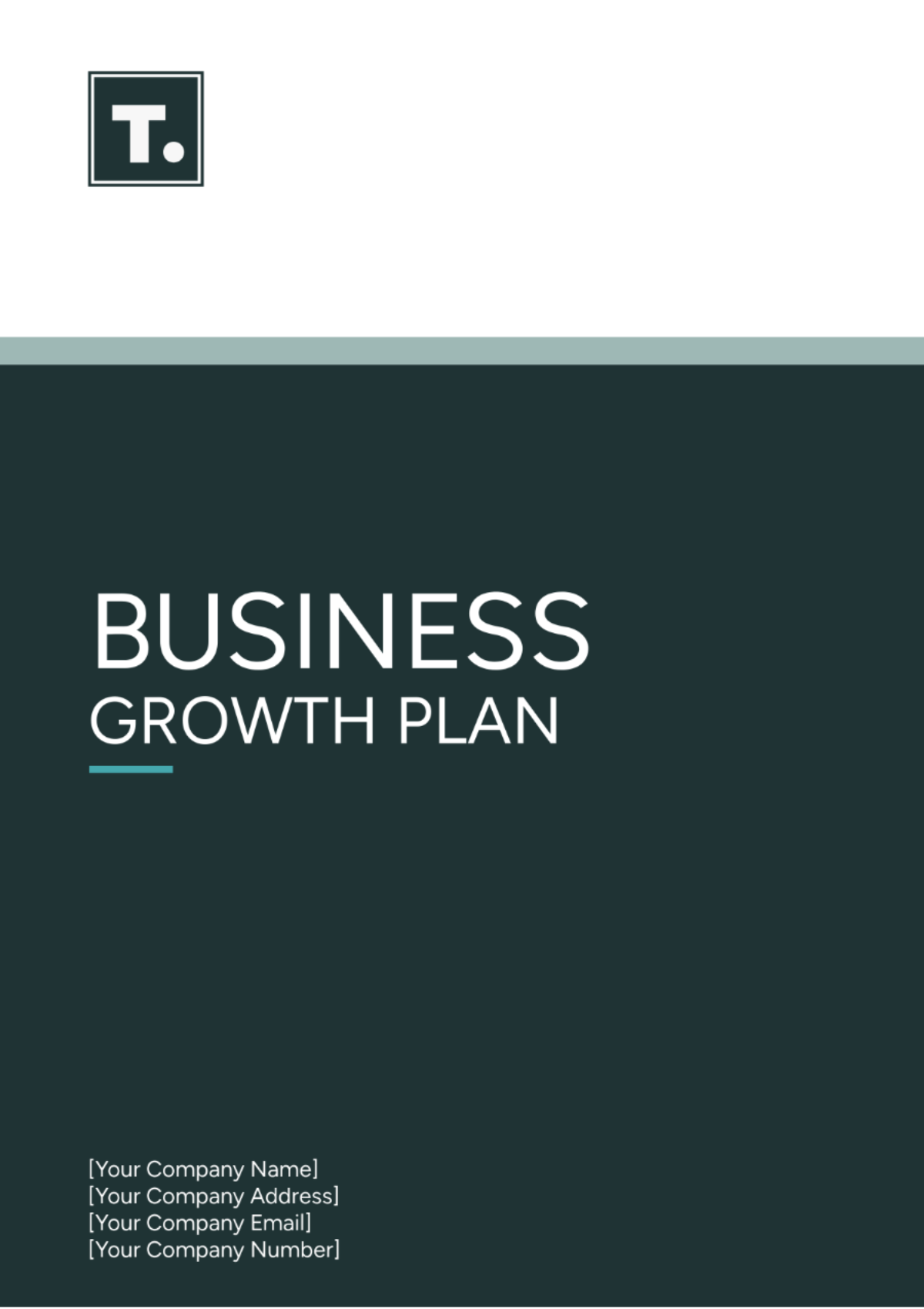Free Business Growth Plan

I. Executive Summary
A. Business Overview
[Your Company Name] is a leading technology company that specializes in software development and IT consulting services. - Established in 2050, [Your Company Name] has steadily grown its market presence and is now poised for further expansion.
B. Mission Statement
[Your Company Name] is committed to providing businesses with innovative technology solutions that drive growth and efficiency.
C. Objectives
Increase market share by 15% over the next two years. - Expand into the European market by 2052. - Achieve a revenue growth of 20% annually.
II. Market Analysis
A. Industry Overview
The technology industry is projected to grow at a CAGR of 10% from 2050 to 2058. - Key trends include the rise of cloud computing, artificial intelligence, and cybersecurity.
B. Target Market
[Your Company Name]'s primary target market consists of small to medium-sized businesses across various industries. - Key characteristics of our target market include a need for scalable technology solutions and a focus on cost-effectiveness.
C. Competitive Analysis
Major competitors include Tech Solutions Ltd., IT Innovations LLC, and Digital Dynamics Inc. - [Your Company Name] differentiates itself through its personalized approach to client needs and its reputation for delivering high-quality solutions.
III. Marketing Strategy
A. Brand Positioning

Position [Your Company Name] as the premier choice for businesses seeking customized technology solutions. - Emphasize our commitment to innovation and customer satisfaction.
B. Marketing Channels

Utilize a multi-channel approach including social media marketing, email campaigns, and industry events. - Implement targeted online advertising campaigns to reach specific industries and decision-makers.
C. Sales Strategy
Build and maintain strong relationships with key clients through personalized service and ongoing support. - Offer competitive pricing and flexible payment options to meet client budget constraints.
IV. Operations Plan
A. Production
Streamline software development processes to improve efficiency and reduce time-to-market. - Invest in new technologies such as agile development methodologies to enhance product quality and innovation.
B. Supply Chain Management
Develop strategic partnerships with reliable software vendors and hardware suppliers. - Implement inventory management systems to optimize stock levels and reduce lead times.
C. Quality Control
Implement rigorous quality assurance processes to ensure software reliability and customer satisfaction. - Regularly review and update internal processes to maintain industry-leading standards.
V. Financial Projections
A. Revenue Forecast
Projected revenue for 2050, 2051, and 2053 is $5 million, $6 million, and $7.2 million respectively. - Factors influencing revenue growth include the expansion into new markets and the launch of new product lines.
B. Cost Analysis
Breakdown of fixed and variable costs including salaries, marketing expenses, and overhead costs. - Strategies to minimize costs while maximizing profitability include outsourcing non-core functions and implementing cost-saving initiatives.
C. Profit Margin
The target profit margin for 2051 is 25%, with a projected increase of 30% by 2053. - Steps to improve profit margin include optimizing pricing strategies and reducing operational inefficiencies.
VI. Action Plan
A. Short-Term Goals
Increase brand awareness through social media marketing campaigns within the next six months. - Launch new software product by Q4 2053 to capitalize on emerging market trends.
B. Medium-Term Goals
Expand market reach to the European market by 2055 through strategic partnerships and targeted marketing efforts. - Achieve $1 million in revenue from new product sales by 2056.
C. Long-Term Goals
Become the market leader in software development for small to medium-sized businesses within the next five years. - Explore opportunities for international expansion into Asia and Latin America by 2057.
VII. Risk Management
A. Identification of Risks
Potential risks include economic downturns, cybersecurity threats, and changes in regulatory requirements. - Conduct thorough risk assessments to prioritize mitigation strategies and develop contingency plans.
B. Mitigation Strategies
Diversify revenue streams to minimize dependency on any single market or product. - Invest in cybersecurity measures and regularly update internal IT systems to mitigate the risk of data breaches.
VIII. Implementation Plan
A. Timeline
Detailed timeline outlining key milestones such as product launches, marketing campaigns, and expansion initiatives. - Assign responsibilities to team members and establish accountability for each task.
B. Resource Allocation
Allocate resources effectively to support implementation efforts, including human resources, financial resources, and technology infrastructure. - Monitor resource utilization and make adjustments as needed to ensure successful implementation.
IX. Monitoring and Evaluation
A. Key Performance Indicators (KPIs)
Track KPIs such as sales revenue, customer acquisition cost, and customer satisfaction scores. - Regularly review KPIs to gauge progress towards goals and identify areas for improvement.
B. Performance Reviews
Conduct quarterly performance reviews to assess the effectiveness of strategies and tactics. - Identify areas of improvement and make necessary adjustments to ensure alignment with business objectives.
X. Conclusion
A. Summary of Key Points
Recap of objectives, strategies, and projected outcomes outlined in the business growth plan. - Reiterate commitment to achieving growth and success through innovation and customer focus.
B. Next Steps
Implement the action plan outlined in this document, with a focus on meeting short-term, medium-term, and long-term goals. - Continuously monitor progress and adapt strategies as needed to ensure success in a dynamic business environment.
- 100% Customizable, free editor
- Access 1 Million+ Templates, photo’s & graphics
- Download or share as a template
- Click and replace photos, graphics, text, backgrounds
- Resize, crop, AI write & more
- Access advanced editor
Unlock your business's full potential with the Business Growth Plan Template from Template.net. This editable and customizable tool empowers entrepreneurs to chart their course to success. Crafted for efficiency, it's not only editable but also compatible with our AI Editor for seamless customization. Elevate your business strategy today with this indispensable resource.
You may also like
- One Page Business Plan
- Coffee Shop Business Plan
- Restaurant Business Plan
- Food Business Plan
- Real Estate Business Plan
- Executive Summary Business Plan
- Cover Page Business Plan
- Nonprofit Business Plan
- Daycare Business Plan
- Construction Business Plan
- Startup Business Plan
- Medical Business Plan
- Bakery Business Plan
- Service Plan
- Hotel Business Plan
- Catering Business Plan
- School Business Plan
- Healthcare Business Plan
- Transportation Plan
- Sports Plan
- Car Wash Business Plan
- Salon Business Plan
- Clothing Business Plan
- Farming Business Plan
- Boutique Plan





























